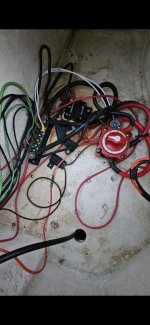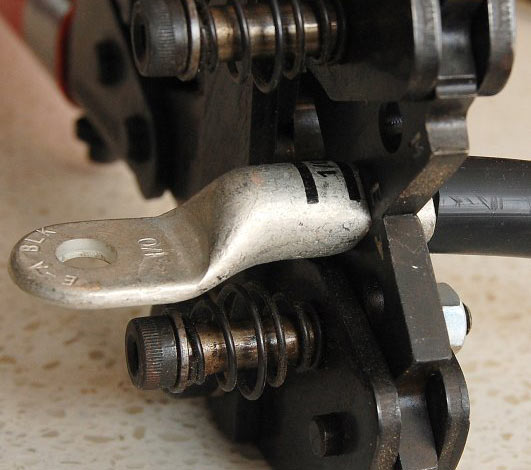Lots of good info in the other posts above here. I recently we-wired my whole boat and found the following resources very helpful:
Boatowners Mechanical and Electrical Manual by Nigel Calder
This book pretty much explains everything you need to know and gives good perspective on the ABYC standards.
The entire "MarineHowTo" article database (especially "how to make your own battery cables)
Pick Your Crimp Tool FTZ 94284 & Ancor Hammer Crimper TEMCO TH0005 & FTZ Bench Mount BUY FTZ 94284 CRIMP TOOL - BAY MARINE
marinehowto.com
The articles here are super thorough and have great tutorials with suggested tools etc. I went with all heavy duty lugs and a giant crimp tool he suggested.
Blueseas has some good articles and a very helpful cable sizing table (also in Nigel's book)
Make sure you buy good quality marine rated
wire (individually tinned strands). Figure out the amperage running through each cable, the tolerable voltage drop, and the cable length (full circuit to load and back) and the table will tell you what size cable you need. .
I used a lot of ancor marine cable and also found
https://gregsmarinewiresupply.com/ to be a good source for the thicker cables.
Crimp connectors that have adhesive lined shrink tubes (along with a quality crimp tool):
Ancor 320101 Heat Shrink Terminal/Connector is the set that I used.
For routing your cables, I really like the
Weldmount system since you can create nice anchor points for your cables without drilling a bunch of holes in your boat:
AT-3 Small Nylon Wire Tie Mount - Use With 3/16" Wide Wire Ties Mounts to Virtually Any Surface Without Drilling Holes

www.fisheriessupply.com
Make sure you buy their glue as well (very expensive but you only need a very small amount per fastener). It is methacrylate based meaning it's very tolerant of poor surface prep and is thick enough where you can just stick on the little anchor and it will stay in place while the adhesive cures. One additional thing I noticed is that these are great for hard-to-reach places and when you run your cable to them, you can use the WM twist off zip ties to do the whole install and "cutting" the zip tie one-handed.
Finally, while you are going through it, it's worth taking the time to label your cables, there is a good article on the "marine howto" section. For the big cables, a label maker and clear shrinktube, for the smaller cables, there is a great direct to shrink-tube printer:
I think you may find this is not a very hard project, you just have to take your time and check every cable for proper size, then wire it all together. In the end you will know your boat and will be able to troubleshoot if any issues arise on the water.


